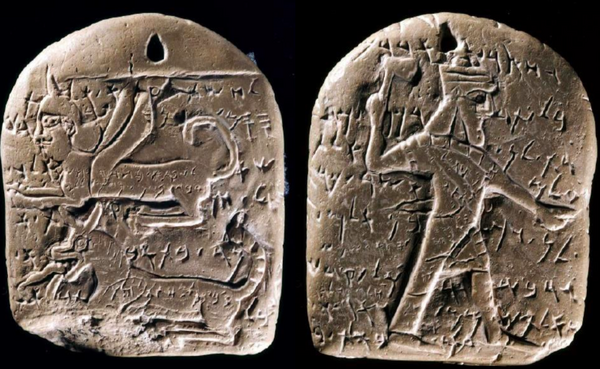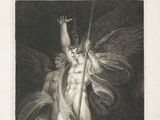In Judaism, what is translated to English as "Demon" can be one of a multitude of evil or unclean spirits. Contrary to Christianity, these demons are not always considered to be fallen angels. The exact views on the nature of demons has varied widely across both Jewish history and across the various Jewish sects that exist today, which has lead to extensive discussion and debate.
Types of Jewish Demons[]
The following is sourced from the website: https://www.jewishvirtuallibrary.org/demons-and-demonology
Foreign Gods (Šedim):[]
Rendered "demons" or "devils" in most translations. (Deut. 32:17; Ps. 106:37; (Compare I Cor. 10:20))
Hairy Demons or Satyrs (Se'irim or Śeʿirīm):[]
Also applied contemptuously to foreign deities (Lev. 17:7; II Chron. 11:15). These creatures haunt ruins, along with Lilith (Isa. 13:21; 34:14).
Lilith:[]
Originally a succubus, believed to cohabit with mortals. She became identified with the child stealing demon, a character she retains in later folklore. The tradition that the name means "screech-owl" (in so many translations) reflects a very ancient association of birds, especially owls, with the demonic. (Isa. 34:14)
Death (Mavet or Māweṯ):[]
The ordinary Hebrew word for death, is also the proper name of a Canaanite underworld god (Mot), the enemy of Baal. The proper name, not the common noun, should probably be understood in Isaiah 28:15, 18:
- "We have made a covenant with Death,"
- And Jeremiah 9:20:
- "For Death is come up into our windows" (Compare Hos. 13:14; Job 18:13, "the firstborn of Death"; 28:22).
Plague (Rešep̄):[]
Another major god of the Canaanite religion who becomes a demonic figure in biblical literature. Resheph is known as the god of plague over much of the ancient Near East, in texts and artistic representations spanning more than a millennium from 1850 B.C.E. to 350 B.C.E. In Habakkuk 3:5, Yahweh on the warpath is said to be preceded and followed by respectively Dever and Resheph (This is similar to the picture of two divine attendants who escort major gods in ancient myths.). Resheph has come to simply mean "plague" (Deut. 33:29; Ps. 78:48), and the fiery darts of the bow (Ps. 76:4; Song 8:6), from the common association of plague with arrows.
Pestilence (Deḇer):[]
The other demonic herald who marches with Yahweh into battle (Hab. 3:5). Dever is also mentioned in Psalms 91:5–6:
- "Thou shalt not be afraid for the Terror (Paḥad) by night; Nor for the Arrow (Ḥeẓ) that flieth by day; Nor for the Pestilence (Dever) that walketh in the darkness; Nor for the Destruction (Ketev) that wasteth at noonday."
- Not only Dever but also the other words italicized above have been plausibly identified as names of demons. The "Arrow" is a familiar symbol in folklore, for disease or sudden pain, and Ketev (Qetev; cf. Deut. 32:24; Isa. 28:2; Hos. 13:14) is in this instance the personification of overpowering noonday heat, known also to Greek and Roman demonology.
The Scapegoat (Azazael or ʿAzʾazaʾel):[]
Occurs in the ritual for the Day of Atonement (Lev. 16:8, 10, 26). Aaron casts lots over two goats, and the one "for ʿAzʾazel" is presented alive before the Lord, and then released into the wilderness. The ancient Greek and Latin versions understood ʿAzʾazel as "goat that departs," hence "the scapegoat" of some English versions. Most of the rabbinic commentators and some moderns take Azazel as the name of the place to which the goat is driven. The great majority of moderns regard Azazel as the personal name of a demon thought to live in the wilderness.
Vampire (Alukah or ʿAluqah):[]
Mentioned in Proverbs 30:15:
- "The alukah hath two daughters, crying, Give, Give."
Hebrew ʿaluqah may simply mean "leech," but since ʿaulaq occurs in Arabic literature as a name of a vampire, this fabulous creature and her two daughters may be referred to as such.
Videos[]
All items (9)




















